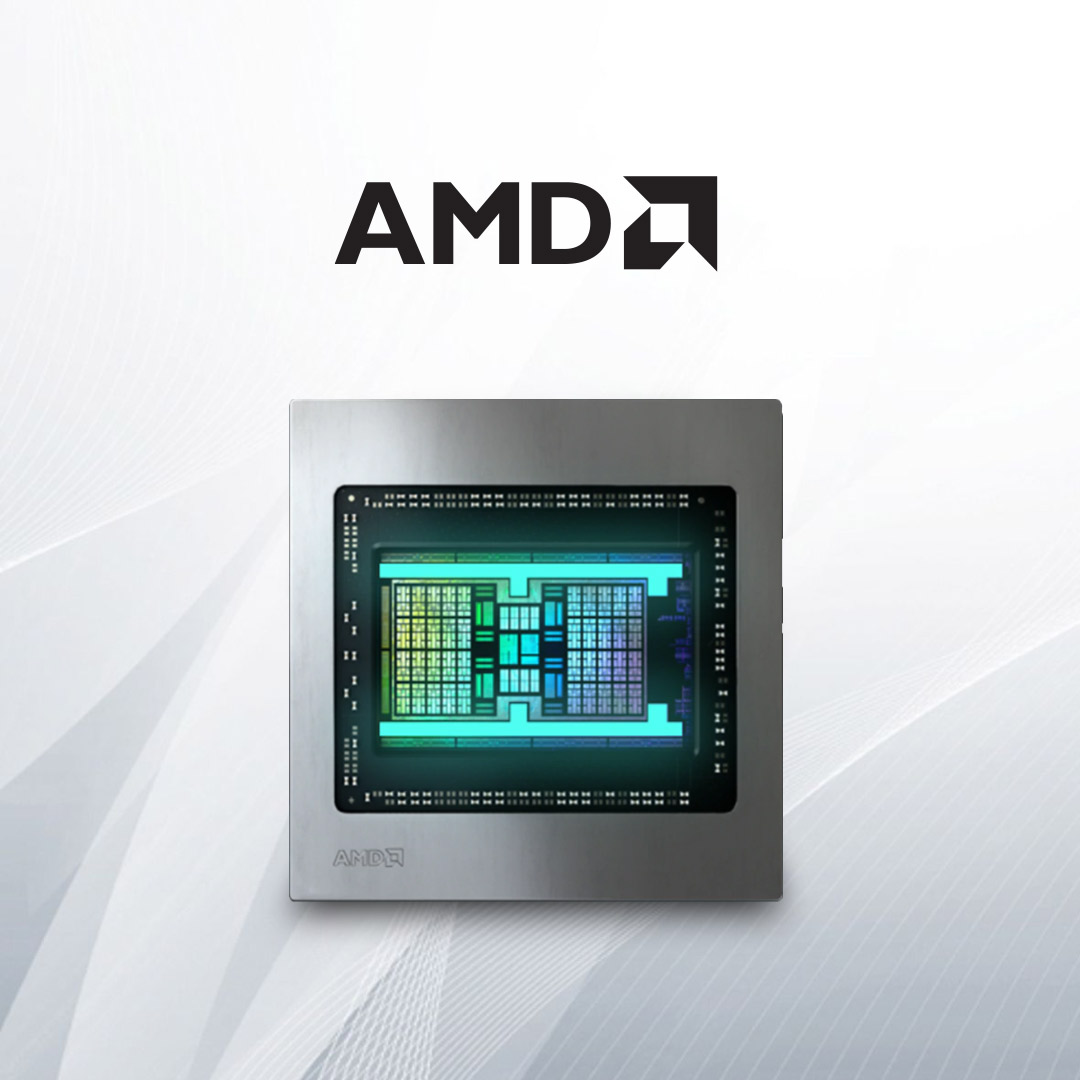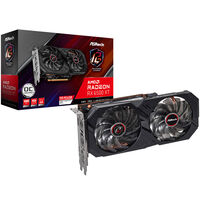Radeon RX 6500 XT
AMD Radeon RX 6500 XT Graphics Cards
The AMD Radeon RX 6500 XT was introduced in early January 2022 during CES. With this graphics card, based on the RDNA2 GPU architecture (Navi II), AMD expands its product portfolio in the entry-level segment. The Navi 24 graphics chip used is manufactured with a 6 nm process, has 1,024 shader units and 4 GB VRAM, making it suitable for smooth gaming in Full HD resolution. In addition to hardware-accelerated ray tracing and AMD's Infinity Cache of the RX 6000 series, the AMD Radeon RX 6500 XT also offers various gaming technologies, such as FidelityFX or AMD Freesync.
Performance Data of the Radeon RX 6500 XT Graphics Card (Reference Design):
- Computing Power (FP32): approx. 5.77 TFLOPS
- Base Clock of the GPU: 2,200 MHz
- Game Clock of the GPU: 2,610 MHz
- Boost Clock of the GPU: 2,815 MHz
- Graphics Memory: 4 GB GDDR6
- Memory Clock: 2,250 MHz (effective 18,000 Mbps)
- Memory Interface: 64 Bit
- Memory Bandwidth: 144 GB/s
- Shader Units: 1,024
- TDP of 107 Watts
- Power Supply: 1x 8-Pin PCIe
- Video Outputs: DP 1.4, HDMI 2.1

Radeon RX 6500 XT: The RDNA2 GPU Architecture
The Radeon RX 6500 XT is based on the Navi 24 graphics chip, which consists of 5.4 billion transistors. The total of 1,024 stream processors (shader units) are grouped in sets of 16 shaders across 16 compute units (CUs, compute units). In addition to the 16 shaders, each CU is assigned a "Ray Accelerator" for hardware-based ray tracing.The GPU clocks on average at up to 2,610 MHz in games. Under particularly high demands on the graphics chip, it can clock up to 2,815 MHz using the boost function. The RDNA2 compute units clock up to 30 percent higher at the same power loss as their predecessor. In terms of energy efficiency, Big Navi also delivers about 65% more performance per watt than the first Navi generation. Here, AMD's Infinity Cache also plays a role.
Infinity Cache & Video Memory
The new features of the RDNA2 architecture include AMD's Infinity Cache. The AMD Infinity Cache enables an effective memory bandwidth that is 3.25 times higher. With a normal 64-bit memory interface and a memory clock of 2,250 MHz, a memory bandwidth of 144 GB/s is achieved. The Infinity Cache of the AMD Radeon RX 6500 XT achieves a bandwidth of 232 GB/s.
As video memory (VRAM), AMD uses the GDDR6 standard and a capacity of 4 GB for the Navi II graphics cards. Thanks to the mentioned Infinity Cache, this achieves a performance that corresponds to the equipment with faster GDDR6X. Thus, AMD can implement a powerful combination of high speed and high capacity on the graphics card without having to resort to the more expensive memory type.
Smart Access Memory
With the Smart Access Memory (SAM) technology, AMD promises additional performance when combining a Radeon RX 6500 XT graphics card with a Ryzen 5000 processor on a motherboard with a B550 or X570 chipset. SAM utilizes the resizable BAR function of the PCIe standard. A corresponding gaming system should benefit from a minimal performance increase. The extent of the performance increase depends on the game and the chosen resolution.
Other Features
The many smaller optimizations of the RDNA2 GPU architecture include:
- HDMI 2.1 for 4K monitors with 120 Hertz
- Variable Rate Shading (DirectX 12 Ultimate)
- Mesh Shader (DirectX 12 Ultimate)
- Sampler Feedback (DirectX 12 Ultimate)
- 4K-H264- & H.256/HEVC Decoding
Ray Tracing & FidelityFX
With the Ray Accelerators, AMD offers hardware-based ray tracing. Ray tracing (Microsoft DirectX 12 DXR) enables realistic lighting by simulating physical properties and the behavior of light. Ray tracing is the calculation of the color of individual pixels as the light travels from the user's eye through a 3D landscape.
On its way through the 3D scenery, the light is reflected or creates reflections from objects. At the same time, shadows, transparent or semi-transparent objects are generated. This results in refractions or distortions. All these effects are combined by ray tracing to display the final color of a pixel on the monitor.
As a relatively new technology, ray tracing places very high demands on the hardware. With FidelityFX, AMD implements a super-resolution technology to relieve the ray tracing accelerators.
Gaming Technologies
Together with the hardware in the form of graphics cards, AMD introduces new gaming technologies to provide PC gamers with a better experience. Supported features for gamers include:
- Performance presets in the Radeon Adrenalin software
- AMD Radeon Anti-Lag
- AMD Radeon Boost
- AMD FreeSync (4K@240Hz, 8K@60Hz)
- Supports HDMI 2.1 VRR
Current AMD RX 6000 Graphics Cards at a Glance:
Do you want to know which AMD graphics card is right for you? The following list includes all current models of the RDNA-2 generation, sorted by performance, starting with the most powerful graphics card.
- AMD Radeon RX 6950 XT
- AMD Radeon RX 6900 XT
- AMD Radeon RX 6800 XT
- AMD Radeon RX 6800
- AMD Radeon RX 6750 XT
- AMD Radeon RX 6700 XT
- AMD Radeon RX 6700
- AMD Radeon RX 6650 XT
- AMD Radeon RX 6600 XT
- AMD Radeon RX 6600
- AMD Radeon RX 6500 XT
- AMD Radeon RX 6400


